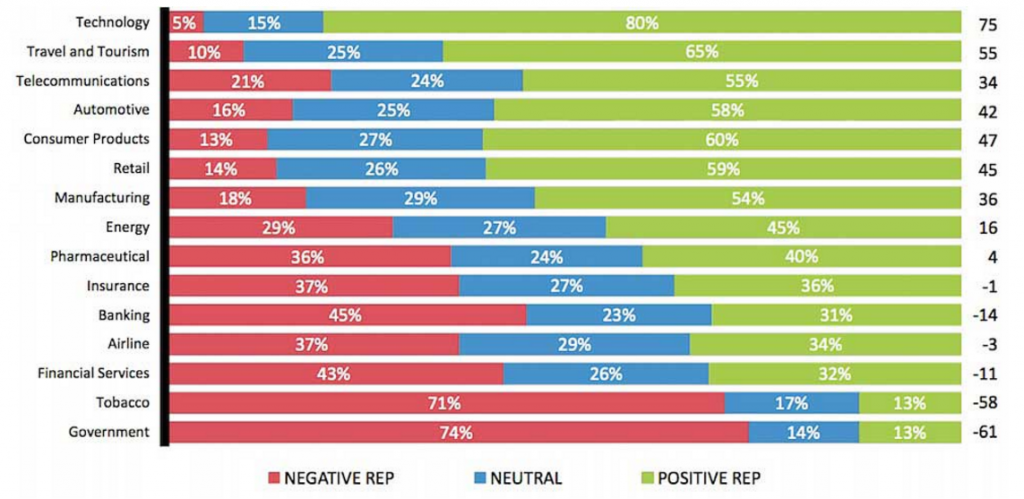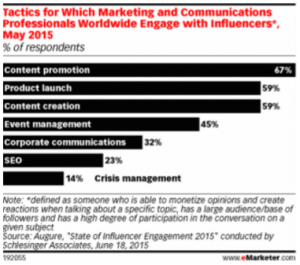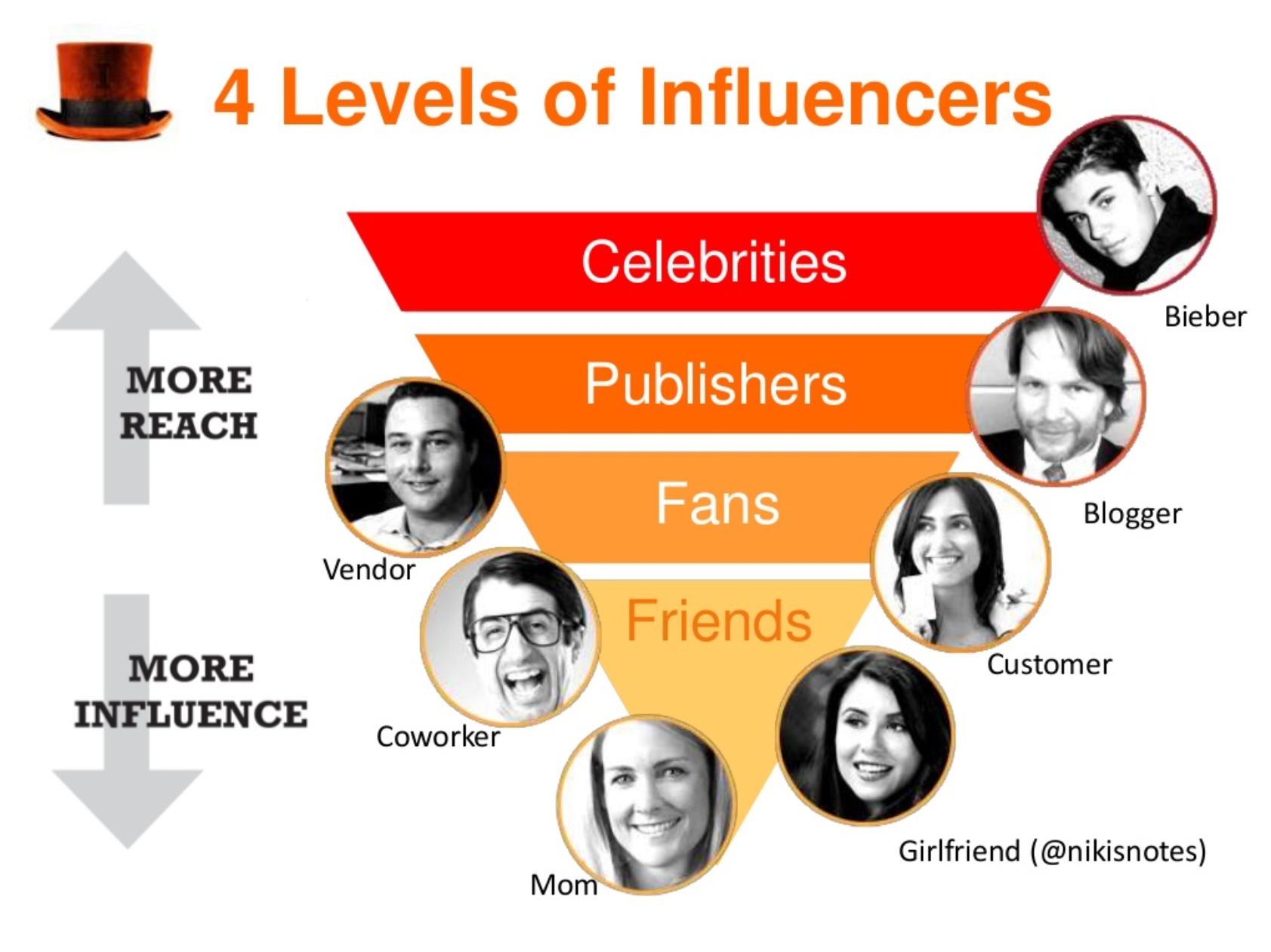Some brands just have “it”.
They exude innovation. They attract investors. They have the financial means to make big-name celebrities the face of their company.
They’ve reputation a great brand reputation.
And this reputation prompts people to do business with them. It even compels their competitors to listen closely and admire when they speak.
It makes you want to be like them, have the same kind of reputation.
The sad part is, only a few brands enjoy such advantages. Many don’t have the resources to hire A-list journalists or celebrities to grow their existing reputation, and others don’t have a great reputation to begin with.
Also, brands in certain industries, like government, financial services, and airline, really need to work on their reputation.

While brands can leverage several options to build brand reputation, we are going to talk about influencer marketing.
Why influencer marketing, you ask? It’s because brands are using it to build reputation & authority, and they’re experiencing good results. Instead of working with mega-stars, some brands prefer to work with lesser known people who have created a strong following with a highly targeted consumer base.
How Influencers Improve Brand Reputation
A brand’s reputation is the total of perceptions of all stakeholders. After the global financial crises, the reputation drivers shifted from financial considerations to ones that include trust and ethics (see the trust factor survey and its impact below). The consequence is that a company should take steps to understand its audiences in each segment and create trustworthy messaging.

That’s where influencer marketing comes in handy. Brands can start building long term relationships with relevant individuals (who can generate impact for the business) and create positive reputation signals from these voices through active content and engagement programs.
The main focus is on quality of relationships and sparking conversations rather than focusing on getting the message in front of everyone out there. Influencer marketing follows this mantra because according to research, less than 3 percent of people participating in online conversations generate 90 percent of the impact.
Brands also use the feedback from influencers to access their brand sentiment and make changes in their approach. Also, the resulting conversations may be monitored to gain critical insight into consumer interest, consumer perception, and reputation challenges. The influencer imperative means you have a powerful resource to start and own the conversation.
But perhaps the most important reputation-boosting capability of influencers is the impact they have on personal recommendations (word-of-mouth in most instances) and reviews. Because of the influencer’s close connection with their audience, the brand they speak about is being “personally recommended”, so people will regard this as word-of-mouth, which is the most trusted form of advertisement.

Also, influencers can have a positive impact on online reviews. By teaching consumers about your offerings, lending some social media authority, and co-creating user-generated content, they can help increase positive reviews and counteract negative feedback with positive sentiment.
The impact on reviews can be a blessing in disguise for industries that face “the negative tilt” their customers don’t just post mediocre experiences online, they post extreme ones. An example is the hotel industry:

So if hotels start leveraging the trust of influencers in the travel and hotel niche to connect with people, they may have a better chance at finding their way out of the negative tilt. They’ll also increase sales as sharing content via influencers in your industry can result in at least a 3x to 10x increase in conversions.
While all this sounds fine and dandy expect to pay a lot of money for reputation building if you work with A-list influencers – people who are not celebrities but have millions of followers. Examples include Vine stars like Logan Paul and Instagram stars like Dan Bilzerian. Influencers like them charge a lot of money for endorsements, other than the fact that they’re pretty hard to reach. In fact, they may not even pay attention to smaller brands, and there’s the danger of people taking their endorsement as a trick by the brand to change their perception.
But there’s good news for you if you’re planning to jump the influencer marketing bandwagon to build brand reputation. You can always use the option of long-tail influencers. They may not have a follower base in millions, but they have influence in their own right. Unlike their A-list counterparts, they’re easier to reach and have deeper connections with other like-minded individuals.
Why Long-Tail Influencers Are Better For Building Brand Reputation
Long-tail influencers build brand reputation from the UGC (user-generated content) that’s created following marketing campaigns. A research pointed out that influencer campaigns are more about inspiring UGC and less about gaining momentum around brand launches. In many instances, the influencer-inspired UGC is able to reach as many, if not more, audiences as celebs and traditional publishers do every single campaign.

Brands often benefit from positive UGC (which spans to reviews, testimonials, and other things that affect reputation) because long-tail influencers work with companies that are exact fits for their followers. These individuals won’t endorse just anyone because they’d lose their audience otherwise. And they won’t say things like “hey, check out this brand”. Content authenticity is the lifeblood of their campaigns, and the reason why they’re so good at building brand reputation.
Tyson Foods is a great example of a brand that leveraged long-tail influencers to build reputation. Their issue was that there were too many nuggets on the shelf, and people weren’t really into the item. What they did was team up with a social media agency to generate excitement among their core consumer group, with the help of influential mom bloggers.
The business and its social media partner ran a campaign titled “Why Should Cookies Have All The Fun?” for 8 weeks. They invited influential mom shoppers as well as their families to take part in “nugget decoration” demos. The brand supplied fun condiments and everyone was asked to go nuts in decorating chicken nuggets, just as they’d decorate a holiday cookie.
One of the bloggers in this campaign was Wendy Wright of Choosing Love. She not only took part in the demos, but also shared the experience with her blog’s audience, building reputation for Tyson Foods. Wright shared her family’s creations, and gave out some tips to help her followers get their own children on board.

All long-tail influencers of the campaign made it a success. After the campaign ended, Tyson experienced a 42 percent rise in average sales, and over 8.8 million impressions (the initial goal was to go above 2.6 million impressions). The nuggets sold out in four weeks because influencers sparked positive conversations and the positive word-out-mouth built brand reputation.
Do note that the influencers were just invited to be a part of an initiative, and therefore they don’t necessarily require monetary compensation. So, in order to build brand reputation with long-tail influencers, you can try incentivizing them via the following measures:
- Invite them to events
- Send out samples
- Co-create products/marketing campaigns
- Give out loyalty memberships for free
- Back their online marketing efforts (provide Facebook ad credits, etc.)
Of course, there’s the option to pay them, but when influencers accept monetary payments, they have to disclose clearly in their blogs, social media accounts, and vlogs that they received monetary compensation to endorse your brand. In this case, there’s a risk that people may think you’re splashing out cash to build your reputation through people they like and know, so non-monetary incentives may be a better option. Also, most long-tail influencers aren’t after monetary compensation; these individuals are just looking to provide value to their followers.
Generally, meaningful brand building campaigns go to waste when they don’t reach a scalable audience. You have the opportunity to ensure your campaign performs well by leveraging influencers whose word is trusted and shared by the followers they are meant to reach.
The Opportunity Knocks
Don’t be like every other brand that goes for influencers with a massive following. If you do take this kind of a leap, you’re going to be dealing with a lot of requests and a lot of work. On the other hand, micro-influencers are capable of creating micro-moments of brand building that help build your reputation overtime with each and every campaign across different online channels.
And while companies may see more clicks from campaigns that involve bigger influencers, smaller influencers are the ones capable of forming close connections with audiences, and therefore they hold greater power to sway opinions (would you believe someone popular in your neighborhood or someone popular in your country?).
To judge a reputation of a long-tail influencer, you can ask for a list of brands and clients they’ve worked with, as well as check the originality of their content and what people think of it. There’s also the option of using an influencer marketing platform to automate the hunting process. Instead of guessing the reputation of an influencer, platforms will give you a detailed overview of their work to help you make an evidence-based decision.
At the end of the day, building brand reputation requires you to enter the peer-to-peer driven economy of reputation management. Set your budget, get in touch with relevant experts, and start having a real impact on people’s day-to-day lives.


